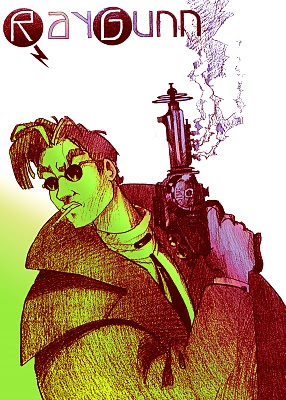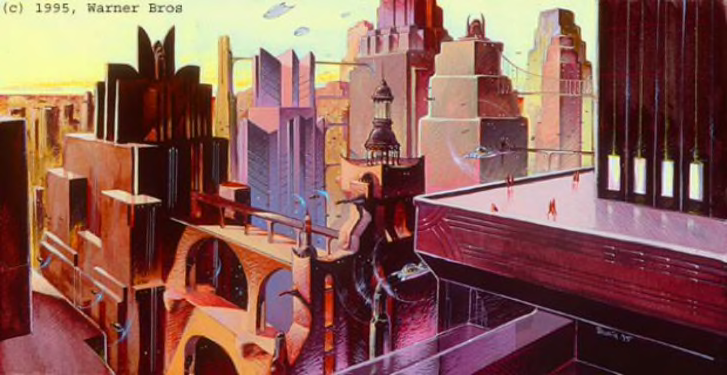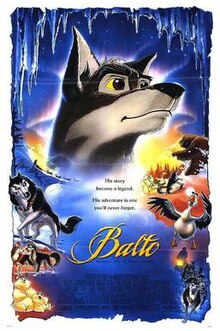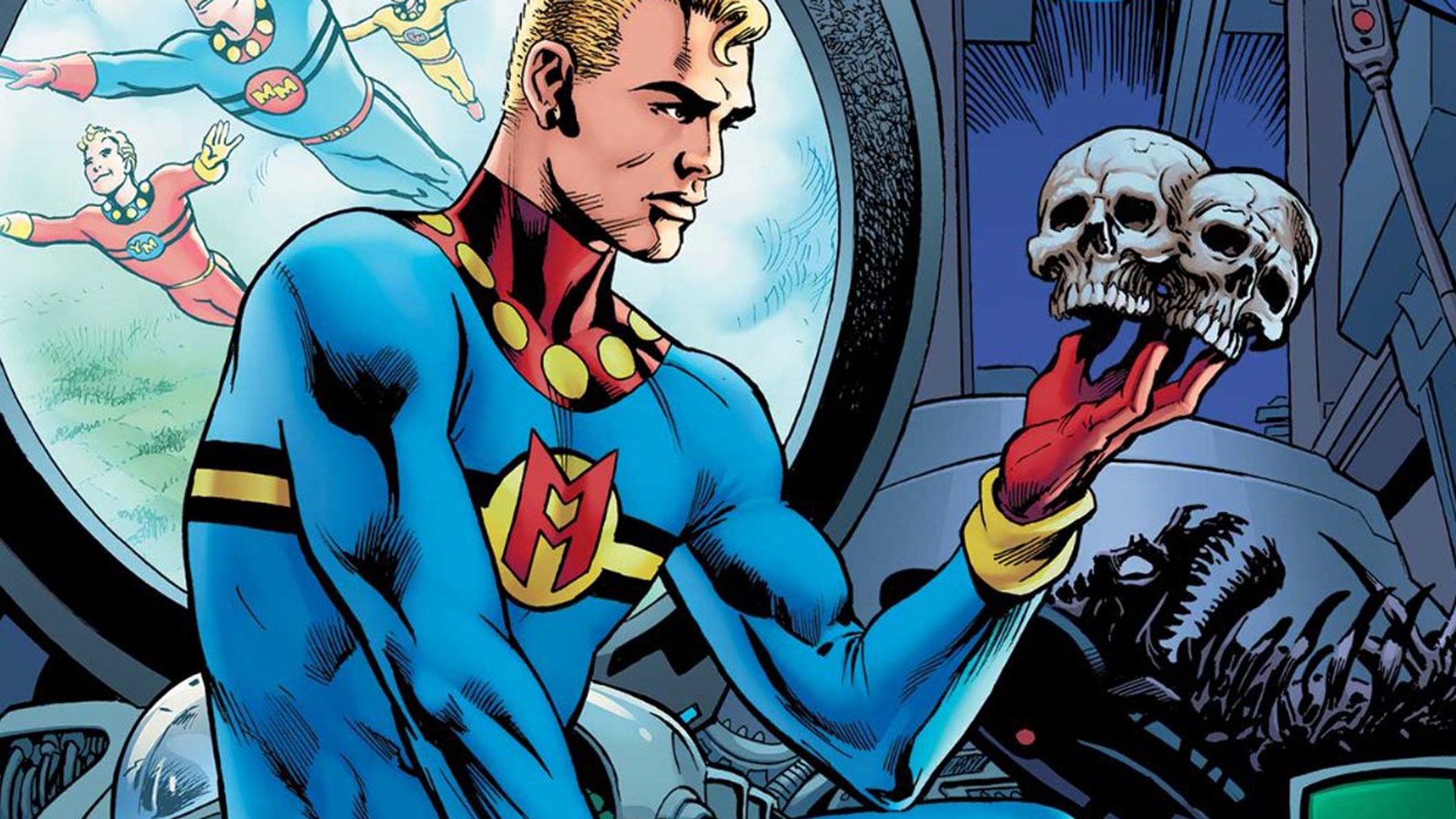Chapter 14: Beyond the Digital Frontier, 1996-Present (Cont'd)
From In the Shadow of the Mouse, Non-Disney Animation 1960-2000, by Joshua Ben Jordan
(Images by
@ExowareMasses)
The great animation renaissance continued on the small screen as well, with consumers now able to choose from tons of content between the competing networks of Disney Toon Town, Cartoon City, and Neptune, with Fox Family also producing numerous Filmation products.
(Image source Lost Media Wiki)
Cartoon City was mixing Hanna-Barbera classics with original, often third-party content, be that reruns of Seth MacFarlane’s musical-esque reboot of
The Flintstones from CBS Primetime or Kickin’ Studios’ stylized, anime-inspired
Dexter’s Laboratory. It launched Sunburst as a showcase for Japanese Anime. But it was also, controversially, starting to experiment with more adult fare, leading to the post-watershed Adult Swim lineup starting in 1997 with insane adult reframing of old HB IP as
Harvey Birdman, Ace Attorney and
Sea Lab 2022. Mike Lazzo saw this as a chance to catch the growing wave of MTV- and HBO-based T-rated animated programming. The success of Adult Swim would spawn competing post-watershed blocks like Toon Town’s Pleasure Island and Neptune’s NGAGE block, the latter name chosen after the somewhat-suggestive Uranus was overwhelmingly rejected and Pluto abandoned after the legal team feared a lawsuit by Disney.
(Image by
@ExowareMasses)
Warner’s Neptune by this point was looking for new options in general. It was winding down the popular
Star Snakes, a sci-fi cartoon made by Zodiac Entertainment[1] that premiered in 1990 and is sometimes considered the “last of its kind” following in the footsteps of
Teenage Mutant Ninja Turtles and the rest of the 1980s Merch-Driven shows. It focused on heroic alien snakes led by the heroic Vipmed who land in Arizona after escaping space pirates who attacked the ark taking members of their race, the Serpentines, to build a colony on a jungle planet after meteor destroyed their home world. They are initially hostilely received on earth, but slowly gain the trust of humans starting with social marginally people but later turn most of the general public to their side, particularly as they help protect earth from the villainous Deathrattle and other often otherworldly threats. Star Snakes was praised for its message of how looks and people can be deceiving, and the importance of communicating, trying to get along with people who are different, and being honest and trustworthy. The Star Snakes toy line, made by Olmec toys, became quite popular in the early 1990s.
(Image source 97.5 KLAK)
But if
Star Snakes offered an interesting “last of its kind”, animator Stephen Hillenburg, who’d worked on
My Dog Zero, would produce something radically different and even surreal. Long a fan of the ocean and oceanic life, and a fan of Ween’s
The Mollusk, which lingered in his mind, Hillenburg pitched an idea called
Intertidal, primarily centered around an anthropomorphic sponge narrating a story of life in the ocean’s intertidal zone. It would eventually evolve into 1997’s radically weird and deliberately immature
SpongeBoy[2], which followed the painfully-naïve titular sponge as he adapted to adulthood despite his childish immaturity. The show in some ways followed on from the
Hoerk & Gatty vein, being silly, surreal, and boundary-pushing, but also took inspiration from
Dexter’s Lab and
Trout Man as well, with some cinematic, anime-inspired action, but surrounding the lowest of stakes from stealing a secret recipe for fast food to discovering what someone was getting for their birthday gift. It regularly mixed in non-sequitur aspects like live action segments, alternate animation styles (like stop motion or anime inspired), and genre shifts (suddenly becoming a romantic comedy halfway through an adventure plot only to then go full slapstick-pie-fight. The sheer insanity of the mix of differing tropes, all done with a madcap, slapstick surrealism, captured a wide audience from young kids to stressed-out adults. Largely G-rated, it occasionally pushed into PG.
(Image by ExowareMasses)
Fox was grabbing a surprising market share both on Fox Family and the Fox Kids block on PFN due in particular to their control of the popular
Star Trek and
Star Wars distribution licenses, with Triad Television President Lucie Salhany feeling that it was time to compete in the crowded sphere. Even with Fox Chair Lisa Henson supporting the effort, Triad would be the last of the century to make their own cable channel with animation as its main focus. In 1999, emboldened by the success of Fox Kids, it launched Cube[3], the name a play upon “cubing” and the numerology of three (a nod to the Triad name), with Tom Nunan as inaugural president. To carve out a niche, Cube would look to the many science fiction properties in the library of Triad and Filmation and make them the focus, with the bumpers and adverts being space-themed. Naturally,
Star Wars and
Star Trek were the flagships of the channel, with
Planet of the Apes being an honorary third tentpole. Behind them came revivals of Filmation’s shows, like
Neo BraveStarr and a clunkily-titled reboot of Masters of the Universe titled
He-Man and She-Ra: Protectors of the Power Universe. Both reboots would be marginally successful for the channel, but the He-Man and She-Ra reboot would give the two Eternian heroes their dues as genuine superheroes.
(Image source Games Radar)
Universal/Hollywood/DiC would continue to push boundaries in an attempt to stand out among the competition. One of the more groundbreaking pre-Universal HA/DiC shows of the mid-90s was
Miracleman: Olympus[4]. Based heavily on, and set after the events of the 1992 Alex Proyas
Miracleman film,
Olympus was based on issue 16 of the Eclipse Comics title by Alan Moore and animated and written by HA/DiC in collaboration with Penguin Animation and Cosgrove Hall Productions. Debuting on ABC and ITV in 1994 alongside
Grizzly Tales for Gruesome Kids and
Where on Earth is Carmen Sandiego?, the series showed the continued adventures of Miracleman (played by Seán Barrett), the superhero who spent most of his career in a simulation, after the destruction of London in the movie, as he and his superpowered allies slowly save the world...from itself. They do this by slowly taking over human civilization as the “New Gods of Earth” and “resolving all of humanity’s many problems and ills” over the course of two seasons, whether the lesser beings want their help or not.
Amid all of this, HA/DiC was going through a tumultuous time, and many noticed similarities in the behaviors and mannerisms of the
Miracleman characters to the characteristics of ABC executives like Michael Eisner, Bob Iger, Jeff Katzenberg, Sumner Redstone, and Daniel Burke. Some wonder if the Olympian takeover was a subtle reflection of the slow political gamesmanship of the many senior executives. Just as the series was airing, Eisner would be out and Iger and Katzenberg ascendant. It would end its run just about the time that Universal Pictures would famously merge with Hollywood/ABC in early 1995, a deal ironically set up by the outgoing Eisner
Many of the projects in production at Hollywood Animation would subsequently be either cancelled or be shared between both studios’ locations as the reshuffling happened. The newly-formed Universal Animation would be put in charge of Hollywood’s projects with production moved to Universal City and set to air on ABC and participating cable channels. Not wanting to be outdone by the other companies in the cable animation space, Jeffrey Katzenberg took a lengthy inventory of what the Universal, ABC, DiC, and Viacom libraries gave him, and saw fit to create his own kid-friendly animation block. The result was spinning off ABC’s early morning kid’s block Kid Kingdom[5], with Chris Meledandri as the first president. The block’s branding was heavily themed around Ancient Egypt, especially the Sphinx as seen on most Hollywood Pictures blockbusters in its first 10 or so years of operation; the desert setting also lent itself thematically to a sandbox theme.
Like a darker version of this
One of the most successful was
Mummies: Warriors of the Dead, an action cartoon that would be co-produced between it and Ivan Reitman’s Northern Lights Entertainment, about a group of living mummies who defend an archaeologist mother and her son from an evil sorcerer due to the son being the reincarnation of the god Ra. Originally made for syndication, the second season would air on Kid Kingdom, a natural fit given the channel’s initial Ancient Egyptian theme. The series would even gain a crossover with Universal’s The Mummy in a TV film titled
Mummies: Tomb of Imhotep.
Of course, it was mostly U/HA/DiC that picked up the slack of programming, given their history as a whole, and nowhere was that more obvious than in two of the network’s first original shows,
General Gadget and a continuation of
The Mysterious Cities of Gold, which the latter gives ‘80s kids a conclusion to DiC’s final Audiovisuel project. While the former is an action-laced anime-inspired sequel series to
Inspector Gadget, with Penny in a more important role than in the original show, notably by having Dr. Claw get smart for once, and discover that Penny was the lynchpin behind all his undoing the whole time. Unfortunately for him, doing this activated Gadget’s “parental defense code”, which forced him to grow a pair and actually take charge to save his niece.
Something like this (Image source
megagrozov on Instagram)
With Disney, Warner Bros., Columbia, Triad, and Hollywood Animation all getting into the 24/hour business, it left the smaller big names, such as Wayward Entertainment and Nelvana, scrambling to find some long-term partners when the new millennium hit.
The Inspiration (Image AAroads.com)
Wayward Entertainment, meanwhile, would partner with artist and writer Everett Peck on his cult classic
Trout Man, the story of Gil Troutman (Will Ferrell), a simple North Carolina river trout mutated by the radiation from nearby Barium Springs, which was polluted by the machinations of the evil urban sprawl developer C. R. Copperplate (Wallace Shawn), who is in reality a mutated cockroach attempting to engineer the environmental collapse of human civilization, in large part through the creation of soul-sucking poorly planned gray-space urban sprawl, to make the world safe for his “kind”. He is doing this with his nefarious 2-X Machine (pronounced “deuce-ex”). It was an idea inspired by a road sign[6] Peck encountered while driving back to New York following a failed pitch to Hanna-Barbera in Atlanta.
Gil Troutman takes on the superhero mantle of Trout Man while juggling a dead-end day job as an insurance claims adjuster and trying to maintain his dysfunctional romance with the lovely park ranger Virginia Pine (Katey Segal). Virginia was in turn from the large and wealthy Pine family (the “Norfolk Pines”), with each family member’s name based on a different species of pine tree: father Red Pine (Stacy Keech), mother Elizabeth White-Pine (Betty White), jailbait teenage sister Loblolly Pine (Brittany Murphy), cowboy cousin Ponderosa Pine, hippie uncle Longleaf Pine, Native American cousin Lodgepole Pine, senile grandmother Wollemi Pine, etc. Reluctantly aided by his angry and passive-aggressive “mentor”, the mutated catfish blues player Scummy Bottoms (whom he dismissively refers to as his “magic catfish”; voiced by Keith David), the borderline sociopathic Troutman/Trout Man always proves to be his own worst enemy.
The T-rated series, which ran from 1993-1997 on FX, was unapologetically politically incorrect with Troutman a horrible, self-righteous jerk and borderline sociopath whose worst impulses got even worse when assuming the mantle of Trout Man. A running gag of the show involved Virginia Pine being in love with the seemingly unassuming Gil Troutman and appalled by his arrogant and mansplaining “heroic” alter-ego, even as Troutman assumed that the opposite was true and constantly tried to impress her as Troutman, usually accidentally foiling her ingenious efforts to expose and stop Copperplate’s evil plans as he “saved” her again and again.
(Image source Hollywood Reporter)
Trout Man, in turn, allegedly inspired
Howard the Duck[7], a UPA/Disney collaboration starring Jason Alexander as the titular foul-mouthed fowl. Playing on Disney’s Pleasure Island block, the series represented the first collaboration between Disney and the “Commies down the river” as Walt and his executives had derisively called the founders of the original UPA, who were disgruntled former Disney employees. Famous for its irreverent topical humor and willingness to bite the hands that fed it, it would also have Marvel heroes show up in small roles and cameos, often to their detriment. Spider Ham was a frequent guest, and “friendly nemesis” for Howard. Additionally, Marvel “in jokes” were common, such as plots involving Tony Stark’s alcoholism, Wolverine’s “anger management” issues (with Professor Hulk as his “sponsor”), or Howard trying to solve a mystery in regards to an obviously-abusive Hank Pym towards Janet Van Dyne. It would run for four seasons and remains a cult classic.
(Image source
ibtrav on Instagram)
And perhaps most bizarrely, Bird Brain developed
Starman: The Animated Series (1994-1999)[8], a high concept musical animated series from the minds of David Bowie and Bruce Timm, which was among the first shows greenlit for MTV. The series was known for pushing the limits not just in subject matter, delving heavily into LGBTQ tropes in particular, but in animation, blending multiple animation types and live action in what Timm called “anicollage”. It would win multiple Emmys, Annies, and other awards for its animation, music, and editing. It had a modest but fanatical audience and remains a cult classic known for its non-linear plots, Lynchian mind-screw, boundary-pushing plots and tropes, and memorable musical sound track as much for its idiosyncratic animation.
But of the small studios, the one who would take the biggest step would be the British stop-mo studio Aardman Animations, whose
Wallace & Gromit and
Creature Comforts Shorts had won numerous awards and gained the small studio numerous fans. And now they were about to embark on their first big budget, feature length production.
“Back in ’95 I had this idea for a sort of
The Great Escape film, but with chickens,” said Peter Lord. “But then [
Finding]
Nemo beat us to the punch there. We put that idea on hold[9]. Jim Henson over at Disney was eager to do a
Wallace & Gromit film, since he loved the Shorts and even played them in the US, though the Board seemed to think that it needed a family angle, for some bizarre reason. So, we thought about that, or possibly a spin-off based on Shawn the Sheep, who appeared in
A Close Shave, though I think a lot of the Yanks missed the Shawn/Shorn pun. We kicked around more ideas. Perhaps a pet rat that ends up in a sewer? James Bond with toads and frogs?”
“It wasn’t just Disney [approaching Aardman],” said Nick Park. “Columbia and Universal were both talking to us, as was Pearson’s Penguin Productions, who’d just bought Pathé, Pinewood, and a peck of other ‘P’ properties in what I imagine is a singularly bizarre ‘P’ obsession on Daly’s part. They were aggressively pursuing us, not just for partnership, but for merger, or at least an underwrite. They suggested that we’d still get to work with Disney for US distribution since they had an ‘in’ as they called it. We considered the deal, ultimately partnering for distribution, but put corporate ties on hold, preferring to remain private if we could.”
Time for training, yea?(Image source YouTube)
And then the idea for the “Tortoise and the Hare” came up. The classic Fable seemed a good option, though there was little that could be done with the original story. “Either the Tortoise wins per the original,” said Park, “Or the Hare wins in a twist. Not much to hang a picture on. But then we thought, well, what comes
after the race?”
“We even ended up flipping the script on Disney Digital after the
Nemo thing, actually,” said Lord with a laugh, “in this case with respect to the Tortoise/Hare subtext in
Sparky. It came strangely full-circle.”
Thus was born the first Aardman feature animation:
Tortoise v. Hare, which began production in late 1996 with a planned 1999/2000 release, directed by Lord, designed by Park, written by Karey Kirkpatrick, produced by Penguin, and distributed in partnership with Walt Disney. It would be Aardman’s biggest challenge to date.
[1] Developed by
@Goldwind2.
[2] Originally going to have this name, but in our timeline an actual mop product grabbed the name first. Needless to say, it evolved into
Sponge Bob Square Pants in our timeline. Will, strangely enough, be
even weirder than our timeline’s show, fully embracing the surrealism and becoming a borderline “Dada comedy” on occasions.
[3] By
@Plateosaurus.
[4] See a
full description here written by
@Igeo654.
[5] Also by
@Plateosaurus.
[6] Based on a true story involving my wife and I that led to this wacky floating idea that never went anywhere. Mrs. Khan and I encountered the road sign around 15 years ago and made jokes for the rest of the drive about how the barium from the springs is probably what mutated the trout-man. The actual road sign is posted above. In our timeline, of course, Peck’s idea was for a duck detective, which became
Duckman.
[7] Battered fedora tips to
@TheFaultsofAlts and
@TheKennedyMachine.
[8] Psychedelic space helmet tip to
@MNM041.
[9] I know, I know…butterflies are a bitch sometimes.
















